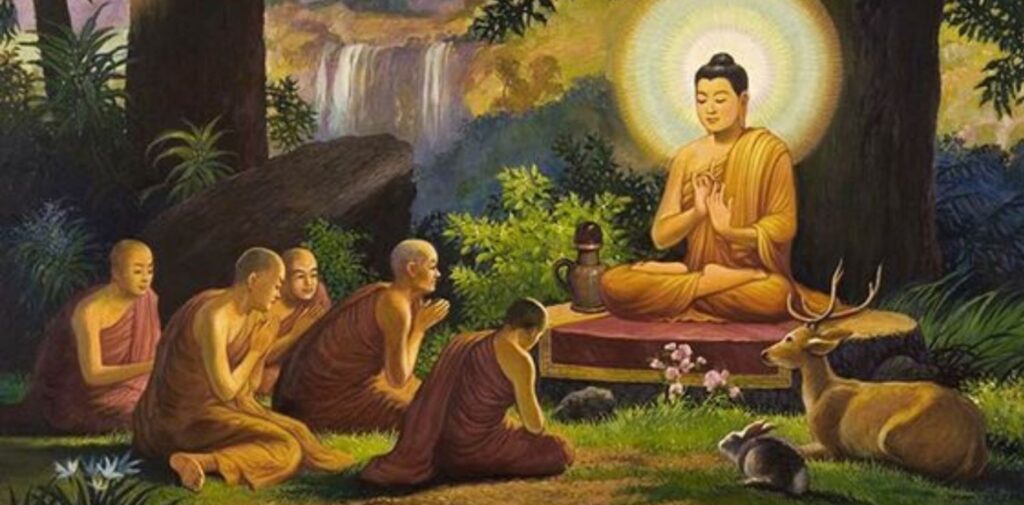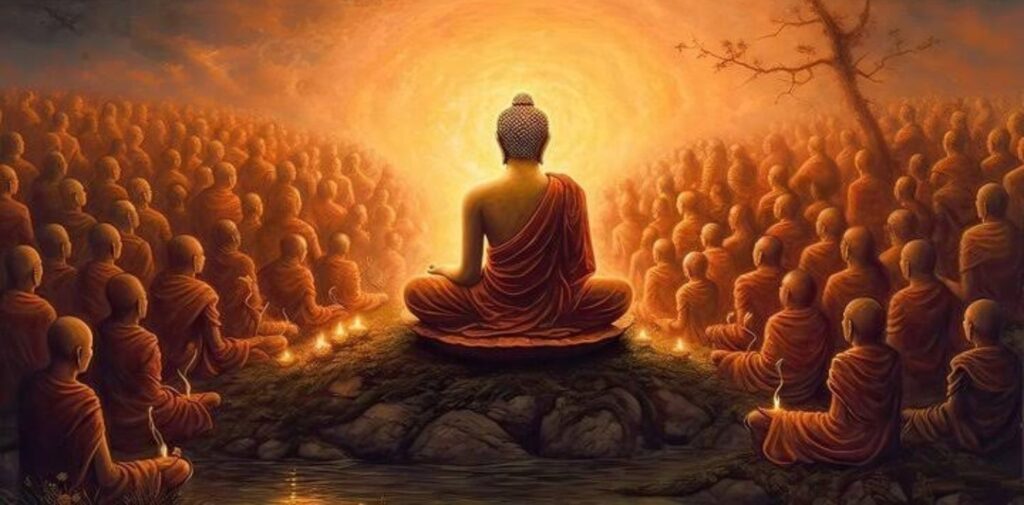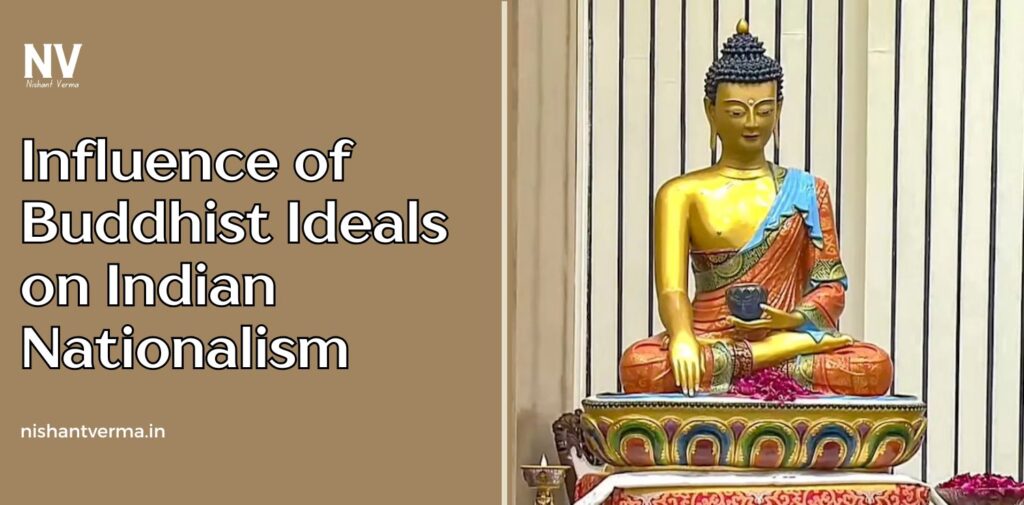Indian nationalism is deeply rooted in the country’s rich cultural, religious, and philosophical traditions. One of the most significant influences on Indian nationalism is Buddhism. Although Buddhism emerged in India many centuries ago, its core ideals and principles have continued to inspire and shape the country’s struggle for independence and the development of a national identity.
This article explores the Influence of Buddhist Ideals on Indian Nationalist movement, helping shape the fight for freedom from British colonial rule and the vision of a unified, diverse India.
The Foundation of Buddhism and Its Core Principles
Buddhism, founded by Siddhartha Gautama, the Buddha, in the 6th century BCE, emphasizes the importance of self-discipline, compassion, non-violence (ahimsa), and the pursuit of enlightenment (nirvana). The religion challenges the rigid caste system of ancient India and advocates for equality among all individuals, regardless of their social or economic background.
The main teachings of Buddhism, such as the Four Noble Truths and the Eightfold Path, stress the importance of living a righteous and peaceful life. These ideas resonated deeply with many individuals in India, especially in times of social injustice and colonial oppression. The essence of Buddhism—promoting peace, harmony, and social equality—became an important source of inspiration for the Indian nationalist movement.

Role of Buddhist Ideals in the Indian Nationalist Movement
The Indian nationalist movement was a response to centuries of foreign rule, primarily under the British Empire. Nationalists sought to reclaim India’s independence and rebuild the nation’s unity. In their struggle, many leaders found strength and motivation in the teachings of Buddhism, even if they were not followers of the religion itself.
1. The Influence of Ahimsa (Non-Violence)
One of the central Buddhist principles is ahimsa, or non-violence. This idea was widely adopted by prominent leaders in the Indian nationalist movement, most notably Mahatma Gandhi. Gandhi was deeply inspired by Buddhist teachings, and he incorporated the practice of non-violence into his philosophy of satyagraha (truth-force).
Gandhi’s commitment to non-violence was central to his strategy of peaceful resistance against British rule. He believed that violence only leads to more violence, and that the moral strength of non-violent protest could unite people and bring about lasting change. This approach not only aligned with Buddhist principles but also appealed to the Indian masses, who saw it as a powerful way to fight oppression without resorting to bloodshed.
Buddhism’s teachings on non-violence also influenced other key figures in the Indian freedom movement, such as Jawaharlal Nehru and Sardar Vallabhbhai Patel, who stressed the importance of peace and reconciliation in the pursuit of independence.
2. The Quest for Social Equality
Buddhism is unique in that it rejects the caste system, a deeply entrenched social hierarchy in ancient India. The Buddha’s teachings emphasized that all human beings are equal, regardless of their social or economic status. This idea was revolutionary at the time and played a key role in challenging the rigid caste system that was a major source of oppression in Indian society.
In the context of Indian nationalism, the ideal of social equality promoted by Buddhism helped to fuel the fight against the injustices of British colonial rule and the inequalities within Indian society. The caste system had been used by both foreign rulers and the elite class to maintain power and privilege, while the masses, especially lower-caste communities, endured exploitation.
Dr. B.R. Ambedkar, a prominent leader in the Indian independence movement and a champion of Dalit rights, was deeply influenced by Buddhism. Ambedkar saw Buddhism as a way to liberate the oppressed and marginalized sections of Indian society. In 1956, he led millions of Dalits to convert to Buddhism as a form of protest against caste-based discrimination and to embrace the equality and social justice that Buddhism advocated.
3. Unity in Diversity
Buddhism, with its emphasis on tolerance, peace, and understanding, became a unifying force for diverse communities within India. The country’s struggle for independence was marked by a wide range of social, cultural, and religious differences. However, Buddhism’s universal appeal and its focus on non-sectarian values encouraged a sense of unity among Indians from various backgrounds.
This idea of unity in diversity was especially important during the period of colonialism, as the British had often tried to divide Indian society along religious and ethnic lines. The nationalists, drawing inspiration from Buddhist teachings, sought to build a unified India that celebrated its diversity while working together for a common cause: independence.
4. The Promotion of Compassion and Humanitarian Values
Buddhism emphasizes compassion and kindness toward all living beings. This focus on compassion resonated with the Indian nationalists, who were fighting for the rights and dignity of their fellow citizens. The colonial rulers were often indifferent to the suffering of the Indian people, exploiting the country’s resources and subjecting the population to harsh treatment.
Buddhist values of empathy and compassion encouraged Indian nationalists to view their struggle as not just a political movement, but also a moral one. They fought not only for freedom from colonial rule but also for social justice, equality, and the well-being of all Indians, especially the poor and disenfranchised. This vision of a just and compassionate society found expression in various social and political reforms that were part of the broader nationalist movement.

Buddhist Symbols in the Indian Freedom Struggle
During the Indian freedom movement, symbols associated with Buddhism became powerful tools for promoting the ideals of independence and unity. For instance, the Buddha’s teachings and the lotus flower, a symbol of purity and enlightenment, were often used by nationalist leaders to inspire the masses.
One of the most important symbols of the nationalist struggle was the Ashoka Chakra, which appears on the Indian national flag today. The chakra is a representation of the Wheel of Dharma, a Buddhist symbol that signifies the continuous cycle of life, death, and rebirth. It also represents the principles of right action, justice, and moral governance, which were core to both Buddhism and the ideals of Indian nationalism.
The Lasting Legacy of Buddhist Ideals in Modern India
Even after India gained independence in 1947, the influence of Buddhism continued to shape the country’s identity. The ideas of peace, tolerance, and social justice that Buddhism promoted were embedded in India’s democratic framework and its commitment to pluralism. The idea that all individuals should have equal rights and opportunities, regardless of their social status or background, is a direct reflection of Buddhist teachings on equality and social justice.
Today, many people in India continue to find inspiration in Buddhism’s teachings, especially in areas related to human rights, social justice, and environmental sustainability. The peaceful message of Buddhism remains an important part of India’s national identity and continues to influence its politics and society.

Conclusion: Influence of Buddhist Ideals
Buddhism has played an important and often overlooked role in shaping Indian nationalism. The values of non-violence, social equality, compassion, and unity promoted by Buddhism resonated deeply with the struggles of the Indian people during the fight for independence. Buddhist ideals provided both spiritual and practical guidance for the nationalist movement, helping to inspire key figures such as Mahatma Gandhi and Dr. B.R. Ambedkar.
Today, the legacy of Buddhism continues to influence Indian society and politics, reminding the nation of the importance of peace, tolerance, and equality. Buddhism’s message of universal compassion and justice continues to be a powerful force in shaping the identity of modern India.




